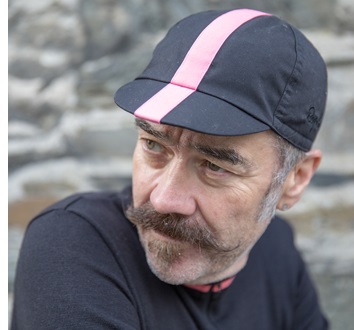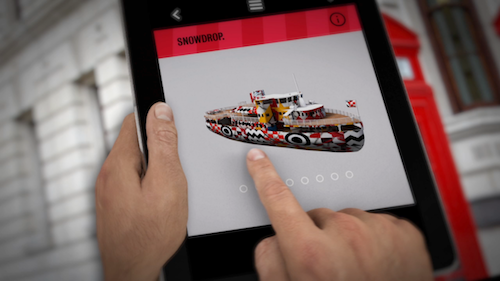Mobile app Dazzle It by Corporation Pop pays homage to artists
 Social Media Portal (SMP): Agency behind Dazzle ItDom Raban (DR):
Social Media Portal (SMP): Agency behind Dazzle ItDom Raban (DR): Corporation Pop
SMP: Name of the brandDR:
14-18 NOW is a four year cultural programme taking place across the UK to mark the centenary of the First World War.
SMP: What regions does Dazzle It cover? DR: UK-wide
 SMP: Why has the app called Dazzle It and how long did it take you to come up with it?DR:
SMP: Why has the app called Dazzle It and how long did it take you to come up with it?DR: Dazzle It pays homage to the early 20th century artists who painted British vessels in dazzle camouflage to confuse German U-boats, so the name of the app reflects this idea. We played around with a variety of names, all containing the word ?Dazzle?, but ?Dazzle It? won through because it was short (and so good for a hashtag), memorable and positive.
SMP: What was the start and end life of the app? DR: The app launched on Tuesday, 8 September 2015. There is no planned end date for the app as yet.
SMP: The target audiences of the app, who are you trying to reach and why?DR: The app is intended to have a broad appeal but will be of particular interest to those who use photo manipulation apps or are interested in augmented reality. It will of course also appeal to anybody interested in history and art. It helps raise awareness of artwork by Sir Peter Blake and Tobias Rehberger who both dazzled ships earlier this year in London and Liverpool as part of the World War One commemorations.
SMP: Briefly, tell us about your app DR: Dazzle It enables you to remix artwork, including designs by Sir Peter Blake renowned for designing the Beatles? Sgt Pepper album cover, with your own photos or images to create a unique Dazzle pattern.
The resulting image is then wrapped around a 3D model of a boat (or even a rubber duck!) before being viewed, via the device?s camera, in an augmented reality scene. You can then share your creation on social networks and post it to the gallery on the
Dazzle microsite where you can also vote on your favourite creations and view a map showing the locations of other Dazzles.
SMP: What are they goals app and why is it different? DR: Dazzle It is a way of bringing the amazing history of World War 1 Dazzle Ships to a modern audience, allowing users to experience Dazzle beyond the installations in Liverpool and London. Unlike most augmented reality apps, users don?t need to have a pre-supplied target to view their Dazzle in a real-world scene.
SMP: What the methods you?re using? DR: The app is distributed via both the
iTunes and
Google Play stores. We wanted to keep the app as streamlined and simple as possible so for supporting information about Dazzle history and the Dazzle art movement users are guided to a
microsite. Here they can also view Dazzles created by other users and vote on their favourites. The app was seeded through both a traditional PR campaign but also through social media with Twitter
@1418NOW being the predominant channel, using the hashtag
#DazzleIt.
SMP: What do you hope to achieve?DR: We are constantly evaluating the app?s success through a number of metrics ? the primary ones being unique downloads, dwell time and repeat sessions. At the time of writing just 28 days after release the app is well on target to meet its projections and over 400 user-generated Dazzles have been submitted to the gallery.
SMP: Why did you choose the First World War theme, what significance does this have?DR: The app was part of the activity launched to mark the centenary of the First World War.
SMP: What were the challenges in creating the app and how did you overcome them?
DR: One of the biggest challenges we faced was in designing an experience that would popularise Dazzle Ships history and bring relevance to a mass audience. I think by enabling users to create their own dazzle patterns we have, at least in part, managed to achieve this.
The user flow in the app is quite complicated too ? a user takes a photo, applies a pattern, chooses a 3D model, wraps the pattern around the model, then views the result through their camera projected in the real world. To make this experience as frictionless as possible was a real UX challenge. We went through numerous design prototypes and tested them with user groups before arriving at the final design.

SMP: Why did you choose augmented reality and what the challenges with this?
Augmented reality seemed to provide an obvious mechanism for bringing history to life. However we didn?t want users to be restricted by needing a pre-supplied or situational marker. To overcome the need for markers we settled on using Vuforia?s mobile vision platform.
SMP: What are doing to measure the app, the game and what measurement tools do you have in place to do this?DR: We?re using Google Analytics for mobile to measure app usage.
SMP: How are / did you making the app and game social/shareable?DR: At key action points within the app (for example on the successful creation of a dazzle pattern or augmented reality scene) users are prompted to share. Submissions to the Gallery are also shareable.
SMP: Are there any dedicated hashtags or social media profiles for the app, game and how/why did you chose these?DR: There aren?t any dedicated profiles for the app, but the app is being promoted through
1418 Now?s Facebook and
Twitter accounts.
If you'd like to feature your campaign, please do let us know. Get in contact.